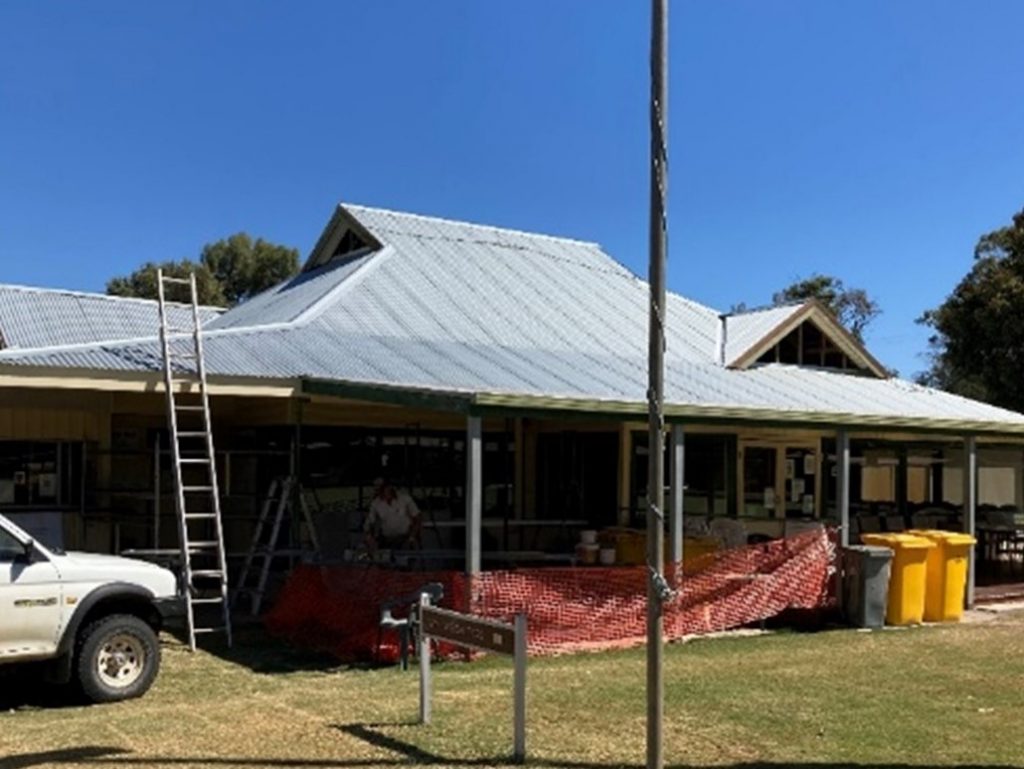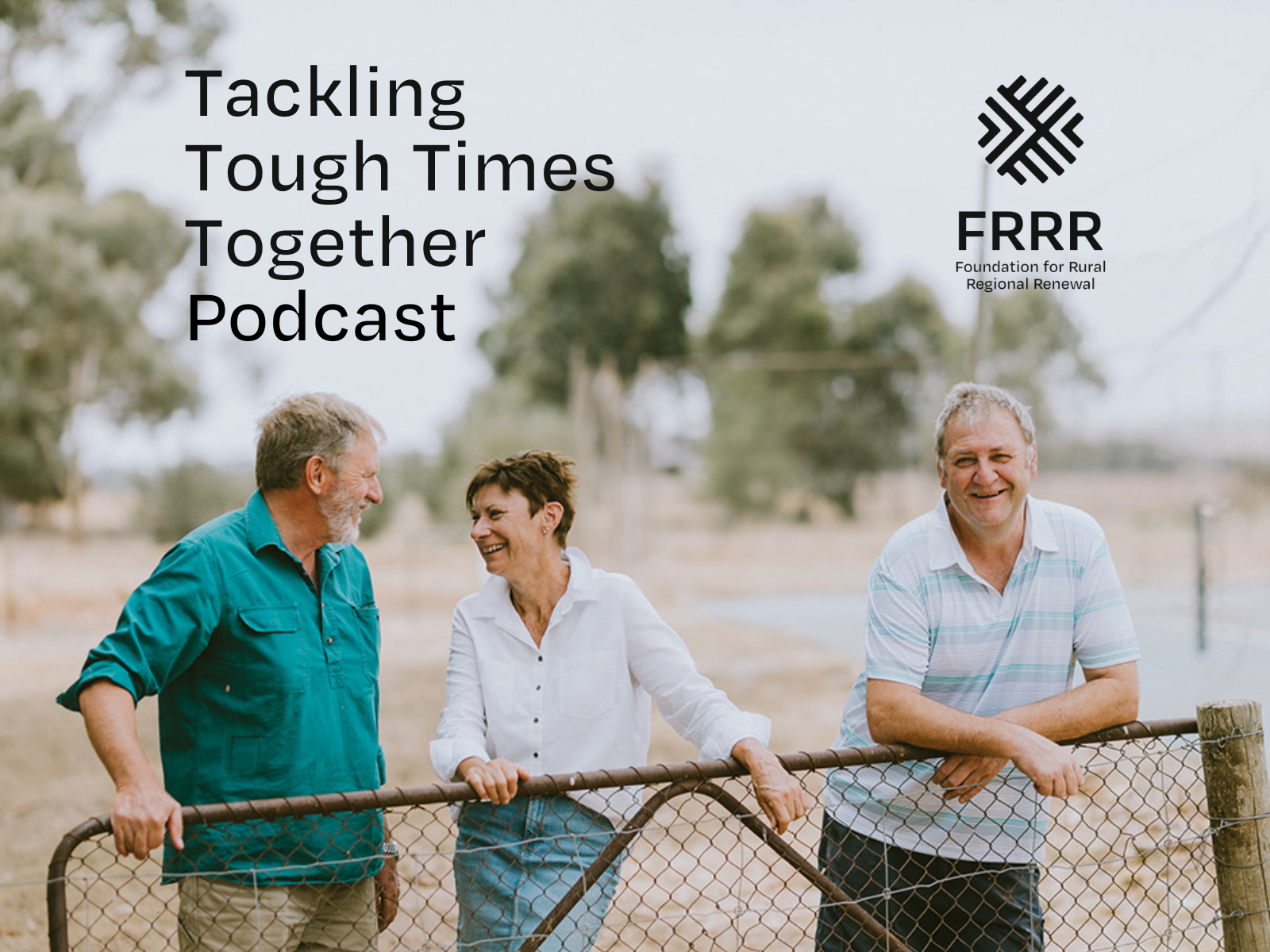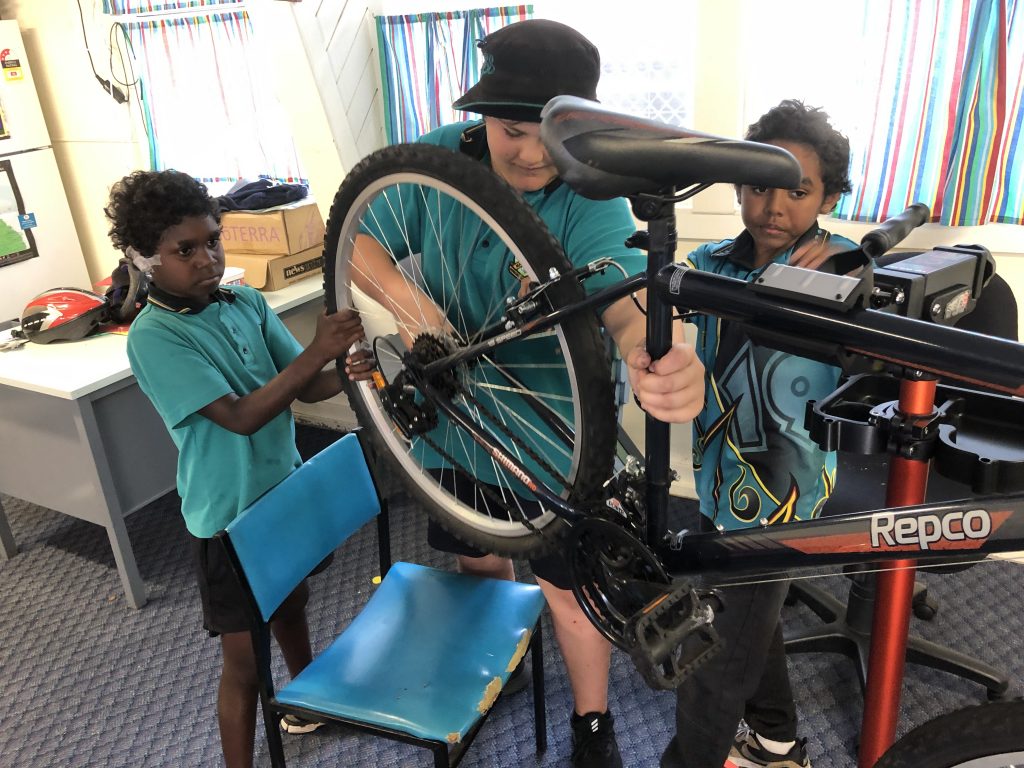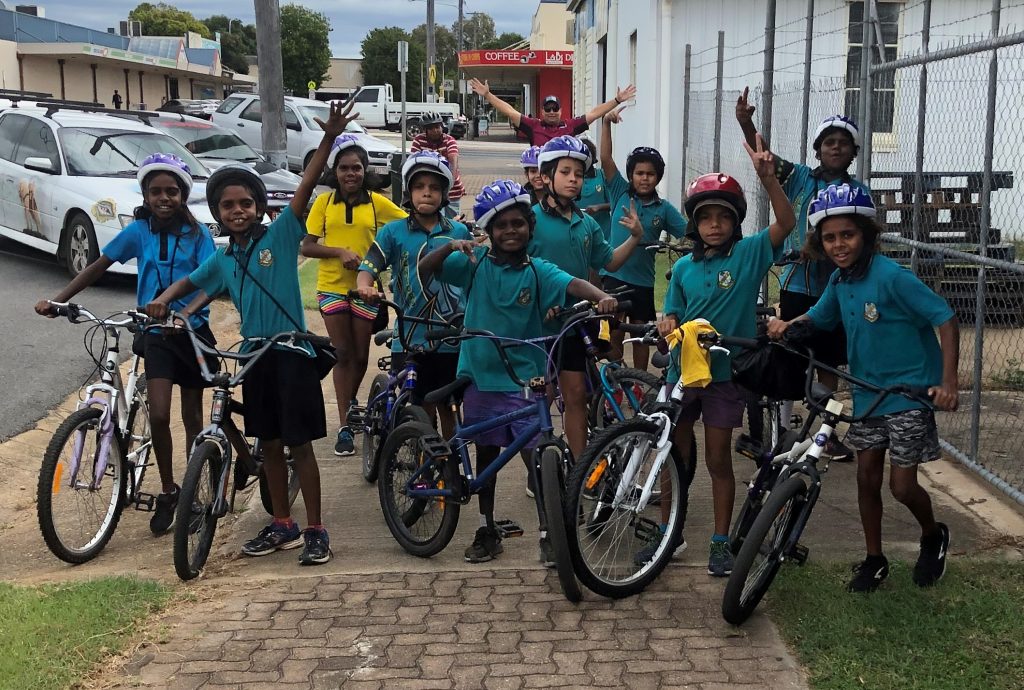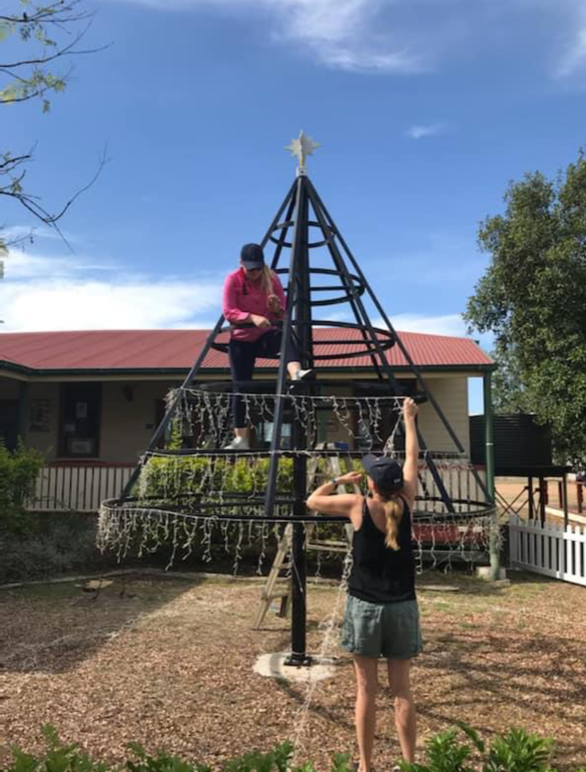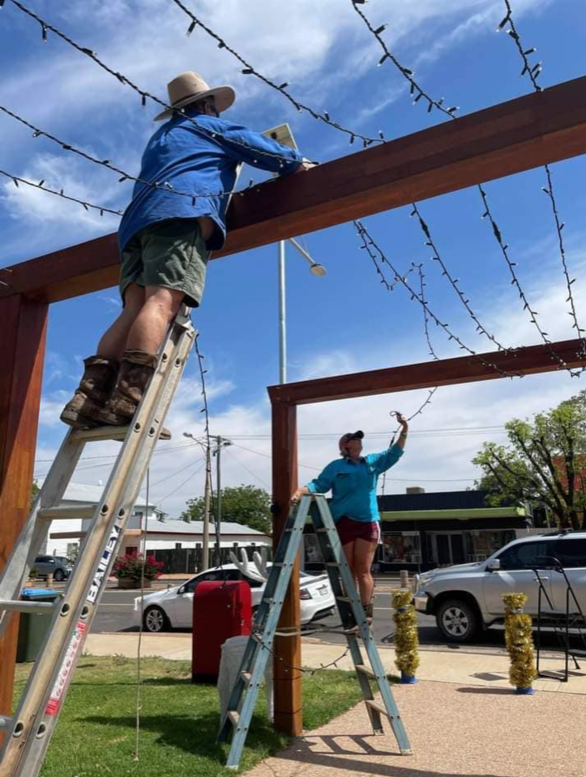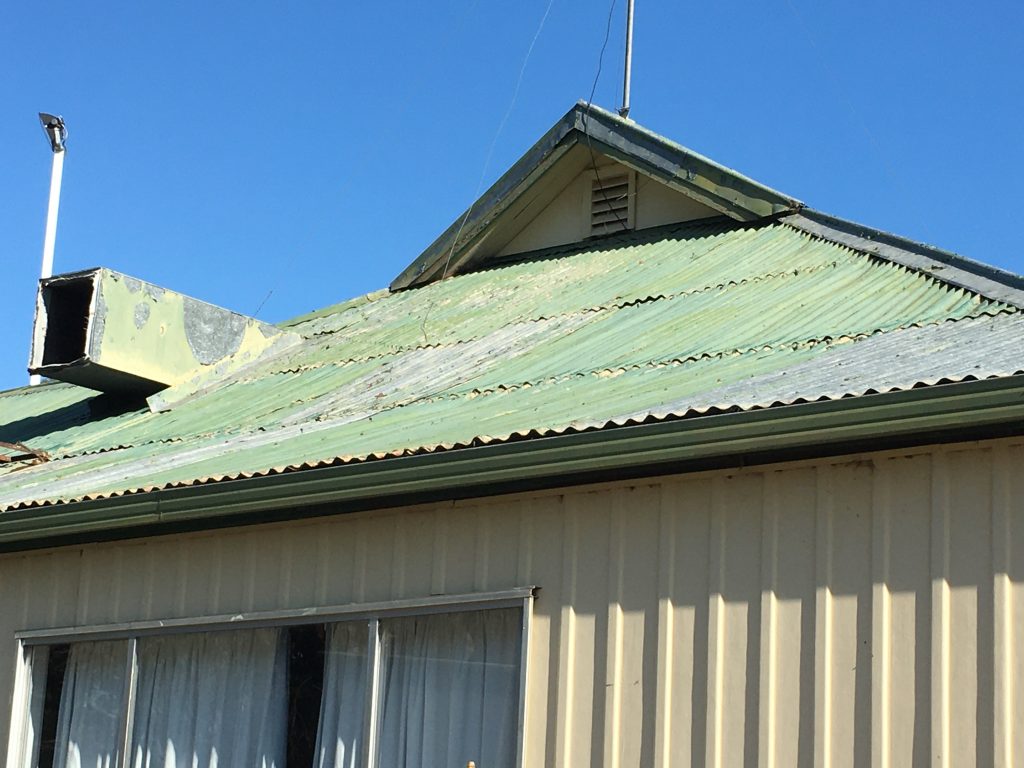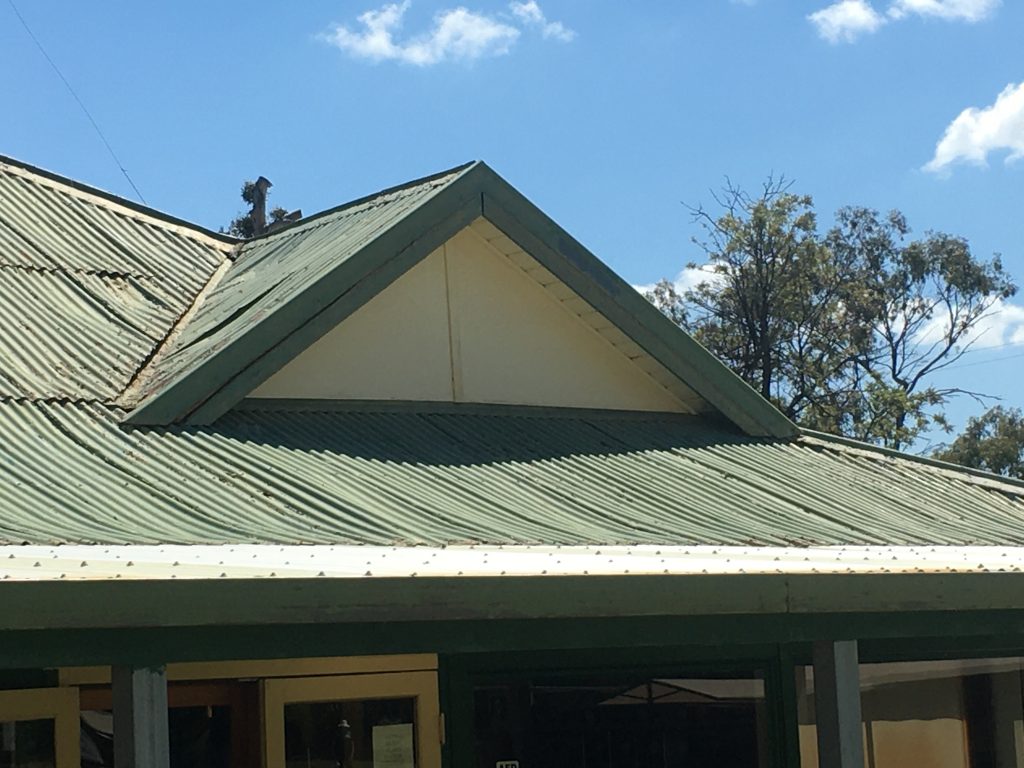Foundation for Rural & Regional Renewal (FRRR)
The Buloke region in Victoria has endured years of spirit-crushing events – from drought to COVID restrictions and flooding rains – and the Buloke Women’s Network has been crucial to keeping spirits up through it all.
The need to come together to recover from isolation and respond to the challenges wrought by these events is how the Celebrating the Women of the Buloke Shire project started. Women came together regularly from across the shire to hear inspiring local speakers at events such as Champagne at Sunset at Lake Tyrell, and a dinner prepared by a local small business at the beautiful Watchem Church.
A Tackling Tough Times Together grant covered catering, venue expenses, advertising and transport. “I could see the impacts of drought, floods, climate change, rising farm costs and declining prices. And there was nothing to support women in the area,” co-founder Ellen White says.
“They wanted to meet other people from other places and connect with them and hear what was happening for them, and if they had the solutions to some of the problems that they had, and just to share their stories.”
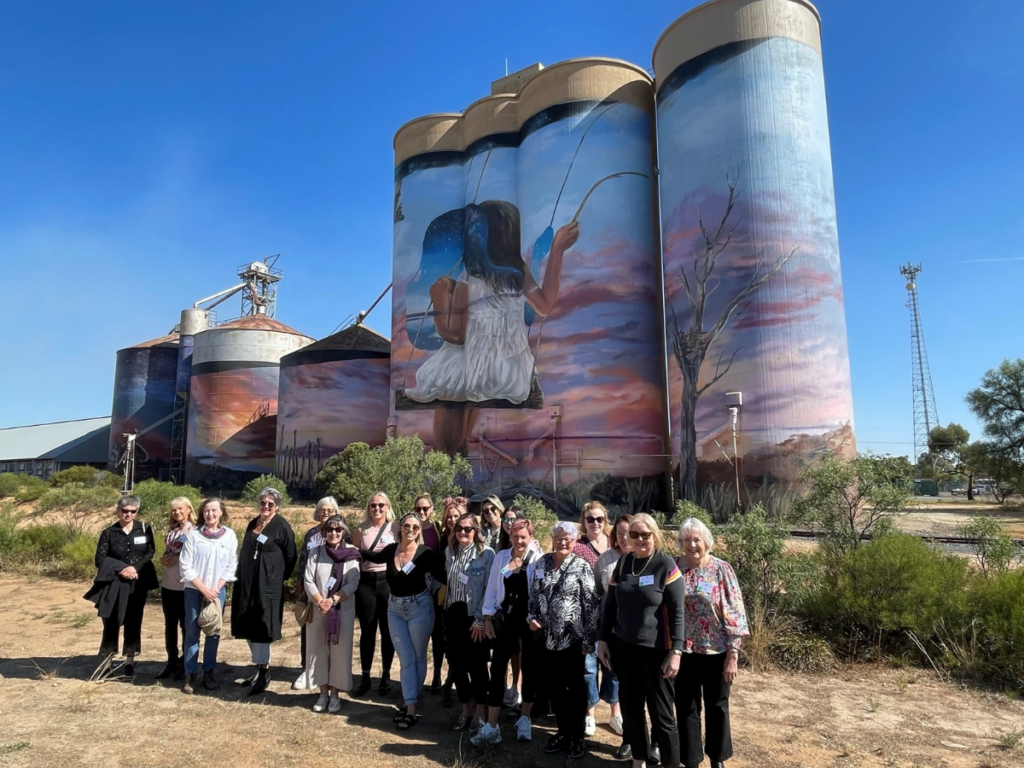


Co-founder Julie Slater says their initial aim was enabling social opportunities for women, but in retrospect she realises how pivotal these gatherings were in helping the entire district survive.
“One of the things that we found really quickly was that what women were looking for was for social connection. Women wanted to be able to stop and take that breath and really sort of say, yep, I’m busy. I have a lot going on, but at the end of the day, I need to fill my own cup if I’m going to be there and fill the rest of my family’s, the rest of my workplace, the rest of my community’s cup.”
By Nina O’Brien, Disaster Resilience and Recovery Lead
I get it. Drought is bloody hard. I have been there many times over the course of my life. It is not really a happy place to emotionally revisit when times eventually come good is it?
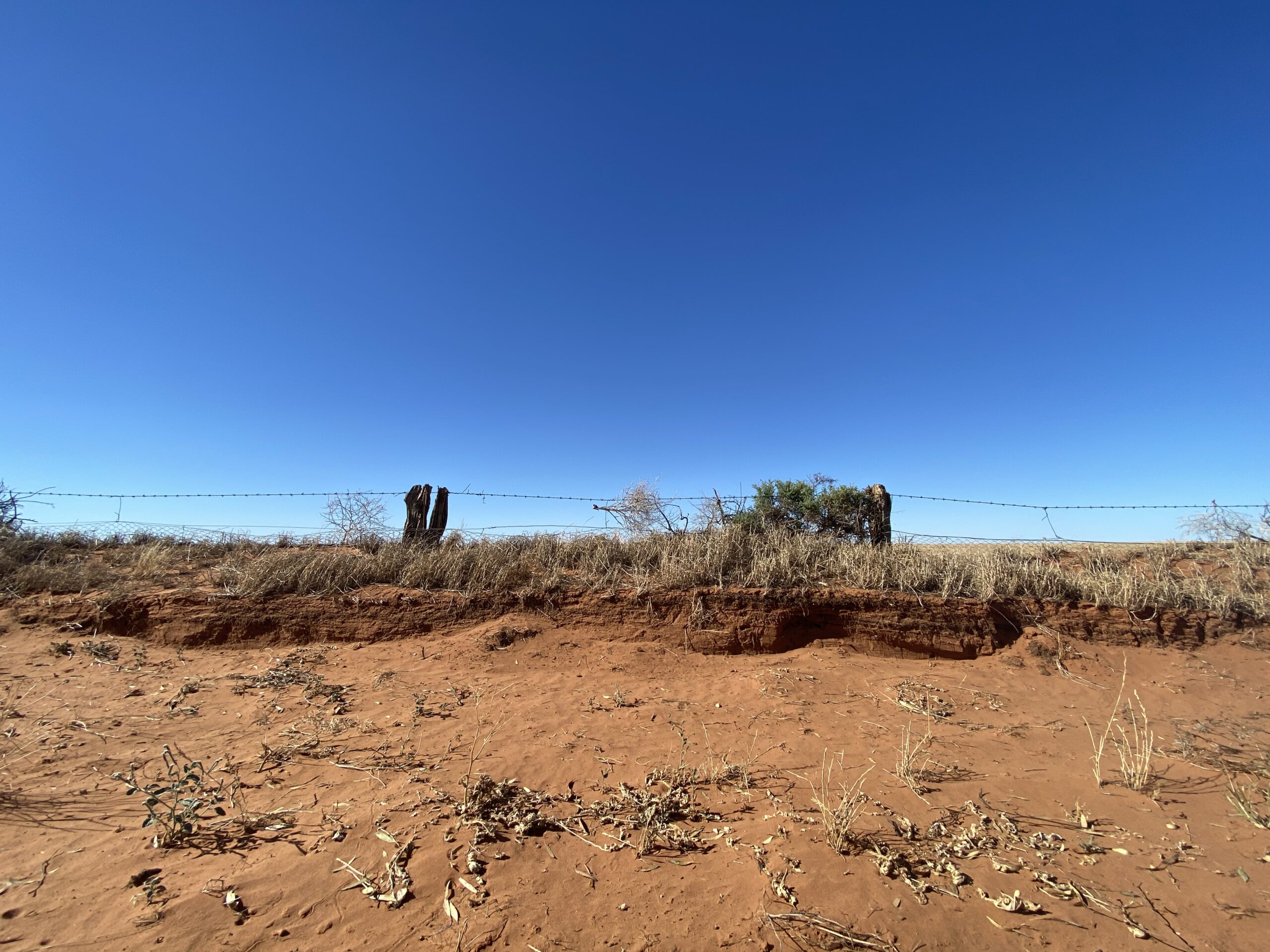
You’re trudging across water depleted landscapes, managing hungry stock that are worth stuff all; fronting up to off farm work we may not love; trying to keep the kids protected from the worst of it; mentally propping up people around us; trying to contribute to the communities where we live, because someone’s always doing it worse than you are; and generally trying to keep things rolling, you just focus on the turn of the weather cycle. You just need to get through it. And then one day, it rains, and recovery starts, and life goes back to ‘normal.
Without reflection, however, I think we miss an opportunity to learn.
Like many things in life, drought is a mixed blessing, and while hard, it is also a valuable opportunity to imagine community life in a way perhaps not considered before and, along with a solid dose of radical acceptance, enables communities or regions to evolve in a way that was not possible before.
If we take a moment to breathe and to ’go back there,’ I am convinced there is a deep richness and positivity in the learning, growth, change and genuine resilience (like, in the actual proper use of that term, not the overused buzzword) that emerges from the disruption that drought causes in community and personal life.
This month has marked a really important milestone at FRRR, one where we have been doing some of that reflection.
After eight sustained years of work, we have just released our insights and learnings from the Tackling Tough Times Together, our long running grant program that supported communities to respond to the community level changes of drought, and the slow recovery period that follows. So, alongside reflecting on what $18.6 million worth of in-drought community investment in 681 projects across eight years really means – yes, 681 different community level responses to drought conditions across Australia – this theme of growth and renewal through disruption continues to surface, over and over again.
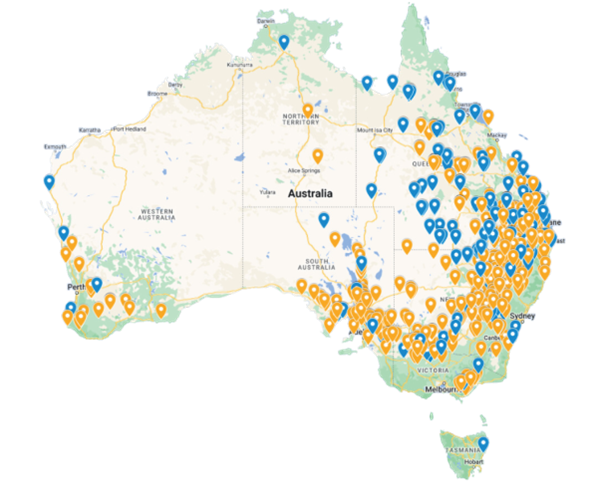
From Buloke in Victoria, to Orroroo in the mid north of SA, or the far west of NSW; communities responded to drought in hugely divergent ways, but growth and renewal have been the central theme.
We all recognise by now that Australia’s landscapes are no stranger to the harsh realities of drought. For remote, rural, and regional communities, these dry spells are more than just weather patterns—they are profound challenges that impact every facet of life. The drought’s effects ripple through the economy, the environment and, most importantly, the social fabric of the communities where we choose to live.
Beginning in 2014, FRRR’s TTTT program offered support to local not-for-profit organisations in these drought-impacted areas to help these communities not just survive but thrive through these tough times. And what a journey it has been…
Through it all, bringing people together during difficult times was absolutely critical. As FRRR’s CEO Natalie Egleton eloquently put it way back in 2017,
“Social cohesion is literally the glue that binds these communities. When adversity strikes, it can easily be reprioritised, especially if it is costly or does not respond to the local context.”
That comment perfectly encapsulates the heart of the TTTT program’s purpose: maintaining social connection and support during immense challenges, in a way that is relevant and accessible, and ideally led by local people and communities.
TTTT was not just about immediate relief – it was, and remains, about creating long-term, sustainable change in places where, often, many other funders do not reach.
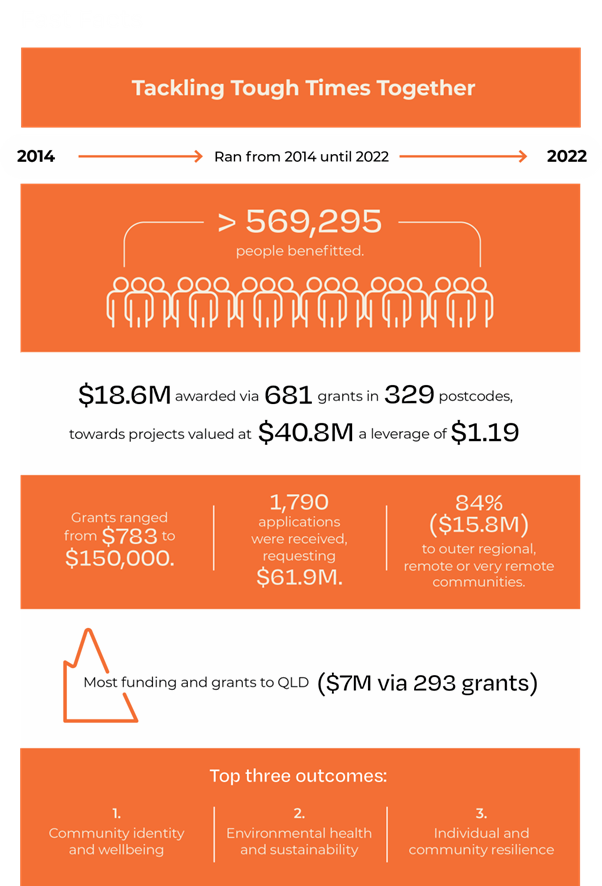
A Brief History of the TTTT Program
The TTTT program was born out of necessity in 2014 when FRRR (Foundation for Rural & Regional Renewal) and Tim Fairfax Family Foundation recognised the pressing need to support community groups in Queensland and northern NSW facing severe drought conditions. The initial focus was on fostering social cohesion, leadership development and skill-building within these communities. With generous contributions from philanthropic donors, including The Yulgilbar Foundation the program launched with ten rounds of funding.
As the drought’s reach expanded beyond Queensland and northern NSW in 2018, the program evolved. The Australian Government stepped in with a substantial commitment of $15 million over five years. This expansion shifted the program’s focus to address issues such as volunteer fatigue, building the capacity and capability of not-for-profits, educational participation for young people, and economic recovery or renewal.
By the time of its final round in May 2022, TTTT had awarded $18.6 million through 681 grants. These grants were crucial in mitigating the extreme impacts of drought and supporting community vitality right across remote, rural and regional Australia. The program has provided a lifeline to outer regional, remote, and very remote communities (where 84% of the overall investment was directed), and in total benefiting nearly 570,000 people across 329 postcodes.
Impact and Outcomes
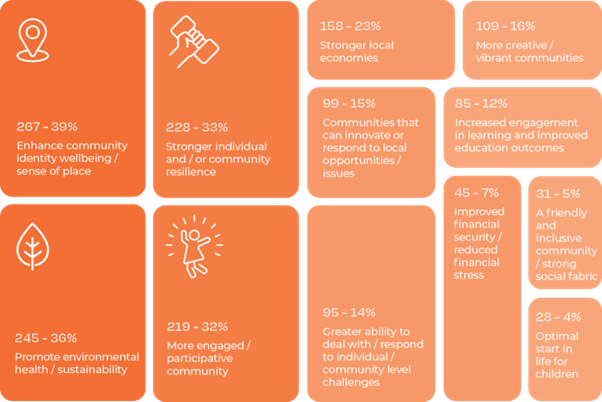
In short; the TTTT investment has proven its ability to boost human and social capital. Locally based not-for-profits have used these funds to foster confidence, creativity and positivity. These elements are vital in enhancing community quality of life and instilling hope for the future.
Over the past two years, FRRR staff, and our partners at JAW Communications and Nance Haxton (The Wandering Journo) have embarked upon the ambitious task of reviewing the final project reports, crunching the metrics, and capturing community insights through videos, case studies, and podcasts.
All are a testament to the program’s effectiveness.
As important, are the stories of impact.
As Gill, a volunteer from the Better in Blackall Festival, (QLD) noted:
After seven years of relentless drought, the community around Blackall in central western Queensland was struggling. As long-time local Gill Russell remembers,
“It was not just us. (the drought) It was very regional, it was statewide. The pastoral and agricultural industry had been brought to its knees. Everyone emotionally and physically was very drained. Because unfortunately if it is dry and the agricultural industry is having a hard time, that also comes across into the community, the town, the shops,” Gill explains. So, what else to do but start a celebration festival showcasing what the region had to offer. Gill is now the President of the Better in Blackall Festival, which brings together locals from near and far for cabaret, concerts and billy kart races. Starting the festival was an important turning point and Gill says it would not have got off the ground without FRRR’s support.”
Indirectly, the program’s support for infrastructure projects has also strengthened the conditions for long-term community vitality. Investments in practical upgrades and infrastructure have proven critical, especially for small communities with limited fundraising abilities. Safe, welcoming spaces for people to gather have been essential in maintaining the connections that underpin social cohesion and support.
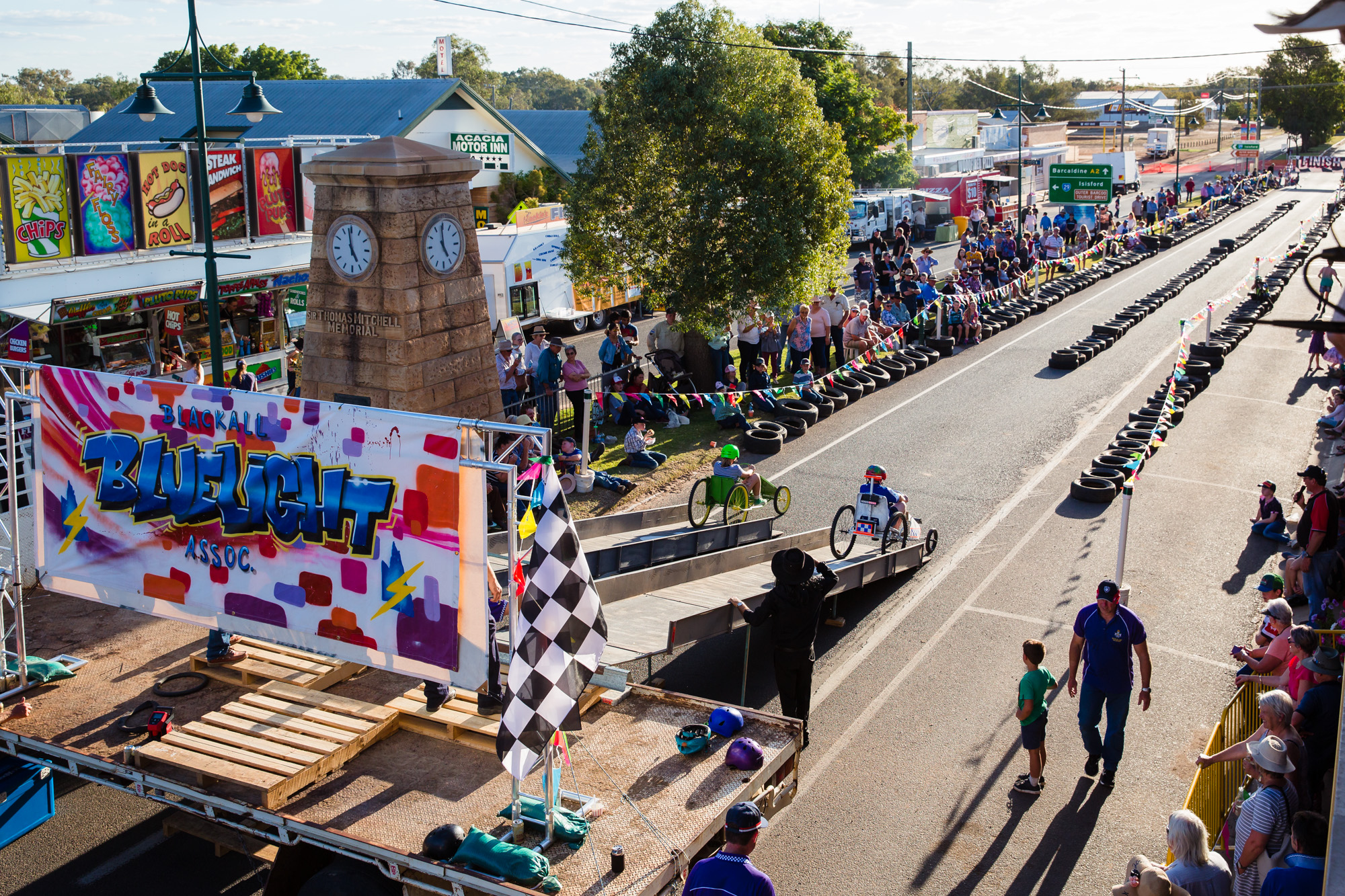
According to Jan Ferguson OAM, Secretary of the Beltana Progress Association, thanks to investment in people and infrastructure, the historic town has become known as a much-loved place for musos to perform on the Festival of Small Halls Folk Circuit. Originally built in 1879, the Beltana Hall is believed to be the oldest galvanised iron hall still in use in Australia. Townspeople patiently spent six years renovating the Hall, with FRRR funding enabling them to remove 20 tonnes of rubble from the cellar. This became a gallery displaying 250 Flinders Ranges paintings bequeathed to the Association, now a popular tourist attraction.
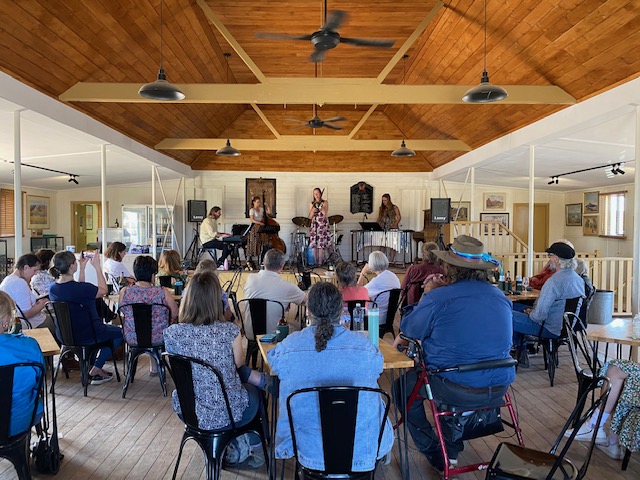
“A lot of drought funding in the past has gone to the agricultural industry, whereas this time there was actually space for communities to join, and that was really, really valuable,” Jan says.
“We did a new strategic plan for the town and the hall was one of the fundamental parts of that, that we needed a good meeting place. The drought funding enabled us to do the social things that were really important in restoring the hall, but it also kept our tradies going. That is essential because if you do not maintain the vibrancy of your community, then it gets really tough.”
She says the funding also brought unexpected benefits. “Since we did all of this, the road into the town’s been sealed by the government. So, the whole profile of the town has changed as we have demonstrated we can do things – and we are doing things.”
The TTTT funding also enabled them to establish a new bore water supply, which in turn led to more tourists as caravaners could stay.
Key Insights and Findings
Overall, The TTTT program’s impact is evident in several key outcomes:
- 39% of the funding enhanced community wellbeing and identity.
- 36% supported environmental health and sustainability.
- 33% focused on building individual and community resilience.
- 32% contributed to more engaged communities.
- 23% bolstered local economies.
The feedback from more than 600 grant recipients highlights the necessity of long-term investment in social and human capital during drought periods. This investment helps offset the challenges posed by drought and supports communities throughout the entire cycle of adversity.
One crucial finding is the importance of resourcing locally based not-for-profit organisations. It might seem obvious, but these organisations play a pivotal role during droughts, and strengthening their capacity has profound community wide impacts. It promotes confidence, creativity, and positivity, leading to improved quality of life and hope for the future.
Additionally, supporting community-driven economic stimulation and diversification has shown to pay dividends well beyond the drought. Stronger local economies lead to more socially participative and engaged communities, enhancing both financial security and community cohesion.
Investment in social and professional networks is equally critical. The TTTT program has been instrumental in strengthening these networks, which are essential for both current drought resilience and future preparedness.
Philanthropic Funding: A Powerful Catalyst
Philanthropic funding has proven to be a powerful activator. Initially backed by philanthropic capital, the TTTT program addressed funding gaps for drought-affected communities and demonstrated a successful model of support. As the program’s effectiveness became evident, other partners joined in, further amplifying its reach and impact.
Today, the TTTT program remains a unique and vital mechanism in Australia’s funding landscape. Its ability to support remote, rural, and regional communities over time, with a depth and ease of accessibility that other funding sources often lack, underscores its significance.
As we look back on the journey of the TTTT program, it is clear that the path to resilience and recovery is paved with community spirit, support and solidarity. The program has not only provided immediate relief but has also fostered long-term growth and sustainability in some of Australia’s most challenging environmental conditions.
This is best demonstrated through projects like Moorambilla Voices. When townships were wondering how they could survive during a decade of drought, Moorambilla Voices – a musical ensemble comprising children from primary age through to high school – was exposed to and created world class arts programs, giving hope when there was little left.
Through TTTT funding, three Mentor positions were funded to support Moorambilla Voices over three years. Annie Berrell acted as Ensemble Manager for 18 years. She says the sense of purpose and joy at a time of such extreme hardship was important not only for the children taking part, but for the parents and carers, extended families and wider community as well.
Founder and artistic director Michelle Leonard said, “Instead of feeling that they have missed out because they grew up in a regional or remote area, they actually realise that they’ve had this enormous advantage and that ability to see things from a variety of perspectives and the interconnectedness of a community stands you in such great stead.” Many of the songs that Moorambilla Voices sing feature Indigenous languages, something Michelle describes as “the beating heart of what we do.”
Moorambilla Voices is now so successful some of its programs are now woven into the New South Wales curriculum and the high school choir performed at the Sydney Opera House last year.

So many stories, and just so much deep impact.
In closing, a word of thanks…
It is important to note that I stand in a circle of strong, and very capable women here at FRRR who have worked very diligently within the TTTT program over the last eight years, and this award is testament to their work, commitment and deep belief in the importance of this work.
Here is to the continued strength, resilience and growth through disruption in our communities, and to the incredible work of organisations and individuals who make a difference every day.
Please take a moment to:
- Read the full Impact Report
- Listen to the series of 10 podcasts
- Watch the series of 10 videos
FRRR launches new podcast series
Leaders from eleven community groups across Australia have shared their stories about the projects their communities embarked on in the depths of the drought that affected so much of Australia over the last decade. The stories can be heard on FRRR’s new Tackling Tough Times Together podcast.
Each of the 10 episodes looks back on a grant that was funded through the long-running Tackling Tough Times Together grant program. Guests are the local leaders behind the projects, who reflect on what shaped the project and most importantly, the impact that it had. They talk about the challenges they faced, how they responded, the lessons they’ve learnt and the legacy that’s been left.
The podcast series supports the release of FRRR’s Tackling Tough Times Together Impact report. The program ran from 2014 to 2022 and sought to support remote, rural and regional communities that were actively in drought, or in the process of recovery from drought. In total, FRRR awarded $18.6 million via 681 grants, with at least half a million people benefitting from the program.
The projects discussed in the podcast range from refurbishing community halls and running community events, to setting up retail spaces so local artisans could generate valuable off-farm income; providing musical experiences that built confidence and skills in young people; to events that brought people together to support one another and to upskill, and art galleries that are not what you might expect.
Social connection was one of the biggest needs, especially as the drought dragged on, and among the stories shared is the Rural Connect project. In the first episode, Lesley Harvey, mental health specialist at the Royal Flying Doctor Service and Sue Kingwill, CEO of Contact Incorporated, talk about how the RFDS and Contact Inc came together to give people across far west New South Wales hope, after 10 years of relentless drought.
Nina O’Brien, FRRR’s Disaster Resilience & Recovery Lead, said that the series highlights the critical role of local leaders and local organisations in shaping a vibrant, resilient, sustainable and empowered community, despite the challenges of drought.
“Drought has always been an enduring feature within the Australian landscape and it’s had profound impacts right across the FRRR’s 25 year history. These conversations showcase the strength and tenacity of rural communities and highlight once again why investing in social capital is a vital puzzle piece for mitigating the impacts of drought.
“Social cohesion is literally the glue that binds these communities. It’s just so important for people to remain socially connected, engaged and feeling like they’re really supported. But when adversity strikes, it can easily be reprioritised, especially if it’s costly or doesn’t respond to the local context. By capturing these stories, we hope to inspire other communities and to celebrate the work of these groups,” Ms O’Brien said.
You can find the whole series at www.soundcloud.com/FRRRAustralia.
A report commissioned by FRRR into its long-running Tackling Tough Times Together (TTTT) drought support program has found that funding local not-for-profit organisations (NFPs) and community groups and activities that strengthen social capital during drought sustains communities and supports recovery.
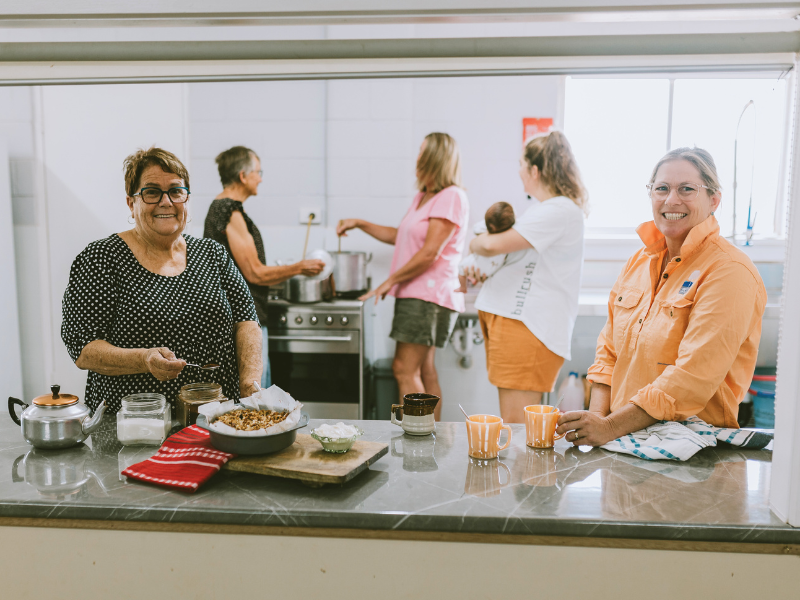
The TTTT program ran from 2014 to 2022 and was collaboratively funded by government and philanthropy, awarding $18.6 million via 681 grants. The majority of funding – 84% – went to outer regional, remote or very remote community groups, which often struggle to access other funding. At least half a million people benefited from the program.
The report found there were clear benefits from the projects funded, both during the drought and in the longer-term. The funding helped mitigate the extreme impacts of drought on local people and communities, either directly through investment in human and social capital, or indirectly through built infrastructure investment, strengthening the enabling conditions for short and long-term community vitality.
The review also found:
FRRR’s CEO, Natalie Egleton, says that the TTTT program remains a unique grant program in the funding landscape across remote, rural and regional Australia.
“This program is unmatched in terms of supporting regional communities throughout the drought, and to a depth and ease of accessibility when other funding was not readily available. While there were guidelines of course, the program was flexible and allowed community groups to respond to and prioritise what was important in their town.
“Some of the other key learnings were around the importance of having a longer than usual timeframe for groups to deliver the projects, as well as the importance of the funding being available for more than just two or three years. This allowed some places to co-design projects that have had a lasting legacy. Continued support after drought-breaking rain was also critical,” she explained.
This report has reinforced FRRR’s advocacy for funding that is right-sized and tailored to rural communities and grassroots NFPs during drought as an approach that can mitigate the effects of drought on communities, economies and landscapes.
You can read the report online on FRRR’s website.
FRRR is hosting a webinar to share more of these learnings on Thursday 29 August, from 1:00-2:00 pm AEST. Register here: https://events.humanitix.com/tackling-tough-times-together-frrr-webinar.
The townships of Loxton and Waikerie are the main service centres in the Riverland of South Australia, around 200 kms north‐east of Adelaide. In 2021, the Riverland was drought declared, with population, economic and environmental challenges evident.
Little Town Productions saw an opportunity to leverage the annual Loxton Lights Up Festival to bring new people to town to boost the local economy, as well as connect and engage locals, while also building skills, especially among the young people in the region, and having some fun.
The District Council of Loxton and Waikerie received a $55,859 Tackling Tough Times Together (TTTT) grant on behalf of Little Town Productions, enabling them to bring their ideas to fruition.
Coinciding with the 30th anniversary of the Lights Up Festival, Little Town Productions created and coordinated a spectacular and innovative illuminated production featuring a unique animated projection mapped to the façade of the historic St Peter’s church. The first of its kind in Loxton and the Riverland region, SHINE ran for eight days in the lead up to Christmas and drew thousands of visitors from Adelaide, regional South Australia and interstate.



The management team was very focussed on utilising and developing local talent, with a view to building skills and training that lead to career and employment pathways for young and unemployed people. The project provided the opportunity for these people to work alongside a key partner – world renowned illumination creative artists Illuminart, who advised on creative design, direction and animation services, immersive and interactive concepts. They also mentored young people and others in the community on technical and creative installation, and conducted training workshops to help build skills to seek employment in animation, theatre, leadership, music, digital sound and technology and production management.
The creative team was set up and led by a local 19-year-old and included other local artists, musicians and representatives from Loxton High School. Several year 11 and 12 students, and their teachers, played a key role in creating the animations, projections and filming of the event. Five of the seven artists who created the background illustrations for the animation were from the Riverland, and three of these were from Loxton. With input from the creative team, two 2020 Loxton High School graduates undertook the storybooking of the animation, working closely with and being mentored by Illuminart animators and illustrators. They were both subsequently offered contracts with Illuminart to work on similar projects while at university.
The local input extended to the music, with all the music in the production composed and recorded by Loxton’s Karyn Skewes. Others involved included the Loxton Community Choir and the Lead Principal of Opera SA. Many of Loxton’s service clubs, community groups and residents were involved and contributed in various ways, including an enthusiastic group of older ladies who created a floral display inside the church, one of the key venues. Artworks related to the project, as well as other art produced by members of the local community, were displayed in Peace Hall on all the nights of SHINE, showcasing the amazing talents of the community.
All this work was captured by Six Foot Productions, who worked with and mentored the town’s young people to create a mini-documentary of the project from start to finish, with behind-the scenes footage capturing the passion and enthusiasm of all involved. The file was posted online a week after the event, reaching 30,000 people, with 12,700 views on Facebook, 264 likes and was shared 89 times.
The TTTT grant, which was funded by the Australian Government, contributed to engaging local companies to provide event equipment – audio, filming, lighting, security, event hire, container and marquee hire and contributed towards creative design by Illuminart.
Andrew Waters from DCLW said that there was no doubt that SHINE was an outstanding success, both for the local community and for the people it drew to the town to celebrate the 30th anniversary of Loxton Lights Up. While COVID presented challenges with restrictions, capacity limits and check-ins, it wasn’t a huge factor, given the event was held outside. A plus to come from it was that the organisers were able to obtain a relatively accurate count, with the registration app indicating that more than 6,000 people were present within the church grounds during the eight days of SHINE!
Andrew said, “On the final two nights we reached a near COVID-capacity of 1,000 people at any one given time. Total numbers on these nights would have been greater, as people came and went throughout the night. The project provided new opportunities to showcase the talents of local artists, musicians, actors and dancers and provided greater opportunity for the community to access the arts… a visual and auditory masterpiece.”
Beyond this, the project addressed the economic decline and disadvantage brought about by extended drought conditions across the Riverland Region. It was a celebration of creative and cultural experiences that are the lifeblood of the region, and was a key driver in re-activating the Riverland arts and entertainment industry. The project directly benefitted the region’s businesses that had been economically impacted by drought, injecting an estimated $1.8M into the local economy and creating new jobs in hospitality, retail and the arts.
On Koa Country
Outback Festival Inc is situated in the Queensland outback town of Winton, a 10-hour drive from Cairns. They’re a not-for-profit organisation that was formed in 1972 when the inaugural Winton Outback Festival took place. Since 1973, the festival has been held biennially and has grown from a small-town event attracting fewer than 1,000 visitors to a major regional event that drew in a record 14,976 attendees over the five days – pretty impressive for a town of only 900 people!
With the help of a $45,000 FRRR grant, funded by the Australian Government through the Tackling Tough Times Together program, Outback Festival Inc was able to host one of their largest Festivals capitalising on the holidaying demographic contained to Queensland due to state borders being closed. The theme was ‘Giants of the Outback’ which showcased the story of Qantas and the role that Australia, and the historic town of Winton, has played in the history of air travel.
In 2021, the festival was more crucial to the community than ever, as a lot of locals in Winton and the surrounding towns were feeling socially isolated following the COVID pandemic, not to mention the hit that the economy had taken due to the absence of visitors and tourists.
The festival was hailed an amazing success, with a record 80% increase in numbers that saw upwards of 4,000 visitors book out nearby motels, camping grounds and hotels. Families from all around Queensland road-tripped their way to Winton for an outback school holiday experience.
People from all ages and backgrounds participated in and attended open air concerts, family sports events, arts performances, workshops and even watched a stunning pyrotechnic display.
Winton is known as the birthplace of Qantas and so, to celebrate 100 years of Qantas, a sunset gala dinner with the theme “Centenary of Flight” was held on the Winton airport tarmac with over 300 guests attending along with the 2nd Cavalry Regiment as invited guests.
As a result of the Outback Festival, Winton got a much-needed influx of revenue with more than $1.2 million being spent by attendees during the five days of quintessential Aussie fun. Local business operators reported huge spikes in trading, with some seeing an increase of up to 127%.
For more inspiring stories like this, head to our FY 2021/22 Annual Review.
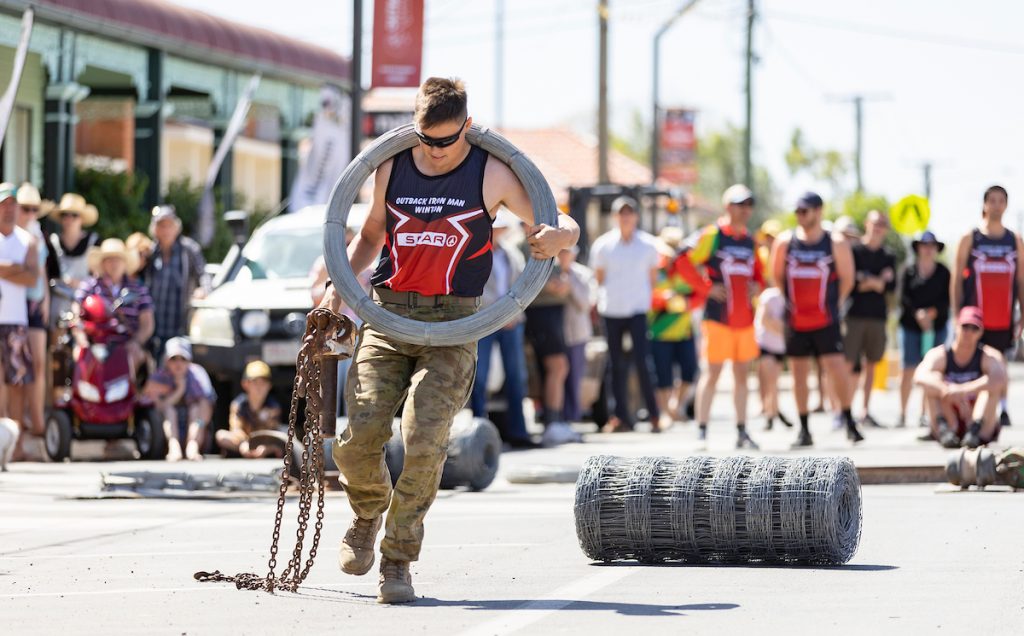 Photos were captured by Barry Alsop of Eyes Wide Open.
Photos were captured by Barry Alsop of Eyes Wide Open.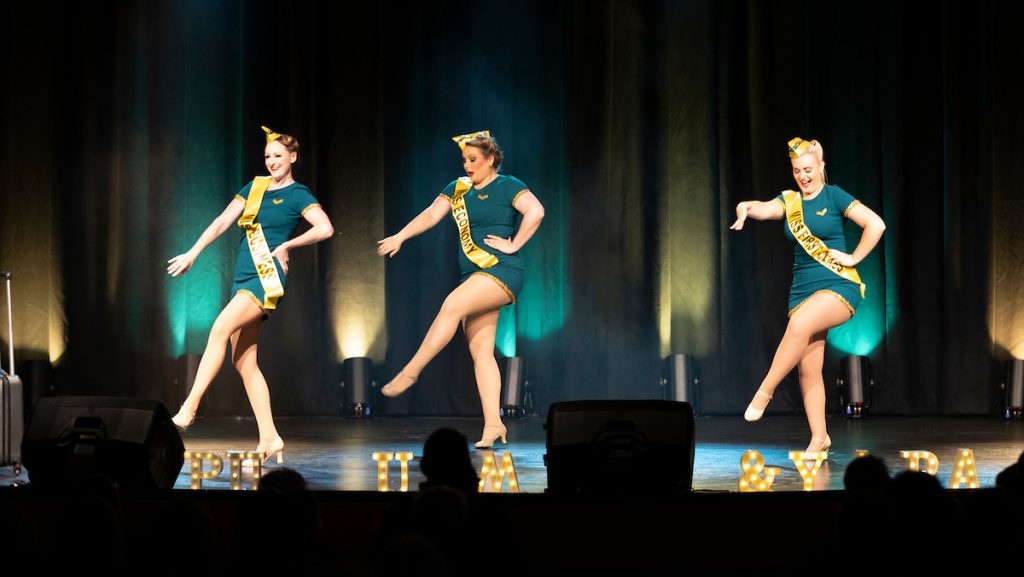 Photos were captured by Barry Alsop of Eyes Wide Open.
Photos were captured by Barry Alsop of Eyes Wide Open.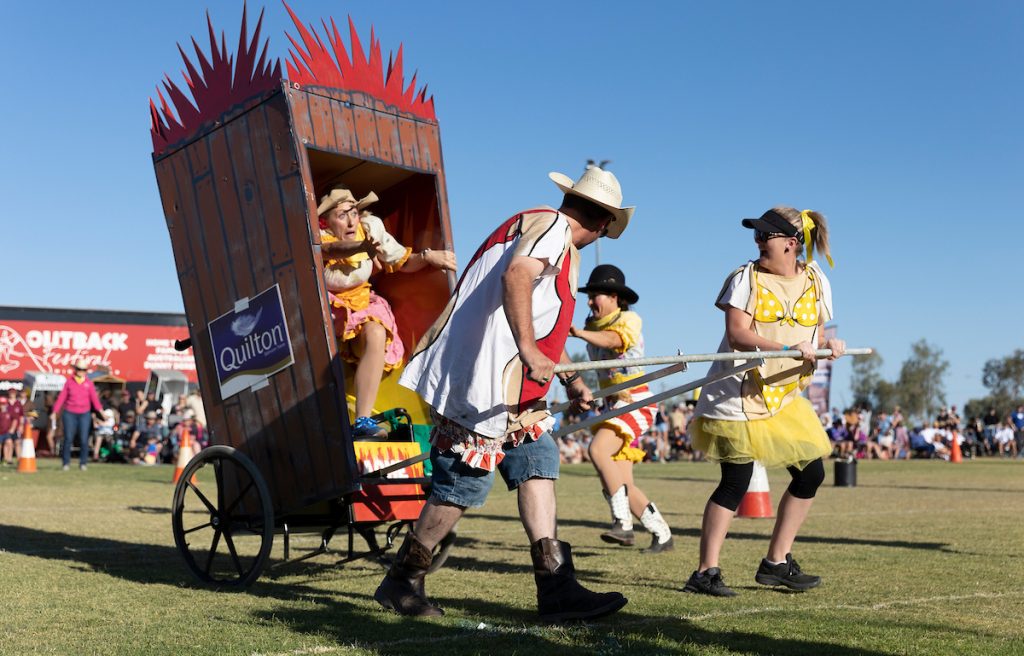 Photos were captured by Barry Alsop of Eyes Wide Open.
Photos were captured by Barry Alsop of Eyes Wide Open.
Nine projects funded across NSW, QLD and WA
While drought is out of the media spotlight, for many communities it is still a very real and significant issue. FRRR’s Tackling Tough Times Together (TTTT) program has just awarded $86,083 to nine community initiatives in remote, rural and regional communities across Australia still dealing with the impacts of drought.

TTTT is a long-running, collaboratively-funded program that helps drought-affected communities to access the funding and resources they need to tackle the long-term impacts of drought. This round of grants will help fund a variety of projects run by local not-for-profit organisations and community groups, including a series of art workshops for both adults and children, a community event featuring Aboriginal artwork, the creation of murals and skills training to support community members experiencing loss and grief.
Nina O’Brien, FRRR’s Disaster Resilience and Recovery Lead, said that there are still many regions across Australia being impacted by drought.
“During this round of grants, the number of eligible LGAs dropped from 152 to 47. While we’re delighted to see such a significant drop in the number of communities being impacted by drought, it’s crucial that we continue to provide support. A lot of places, like remote SA, are still tackling extreme periods of dryness while others are very much still in drought recovery mode. Not to mention the fact that communities are dealing with a variety of other factors as they continue to stand strong and keep their community connected and supported.
“In this round of applications, we saw a lot of projects that are aiming to improve volunteer capacity and build a sense of social connectedness. If the last two years have taught us anything, it’s that our remote, rural and regional communities need volunteers and a strong sense of community in order to thrive.
“When we carried out our Heartbeat of Rural Australia survey last year, the results showed that the effects of drought, as well as the cumulative effects of multiple other disasters, have left volunteers feeling extremely fatigued, and those living in rural communities feeling isolated. That’s why we’re so pleased to be able to fund these kinds of grassroots initiatives at a time when they’re truly needed,” Ms O’Brien said.
Among the other projects funded this round were:
- Red Ridge Ltd – Longreach, QLD – Outback Fashion Festival – Canvas to Catwalk – Provide opportunities for Aboriginal artists from seven outback Queensland communities to participate in fashion print design workshops which culminate in a catwalk runway community event. $10,000
- Rattler Railway Company Ltd – Gympie, QLD – Fatigue Management Accommodation- Build the capacity, capability, and sustainability of Rattler Railway Company Ltd through infrastructure restoration and renovation to support volunteers. $10,000
- For a Better Chapman Valley (FABCV) Incorporated – Chapman Valley & Nabawa, WA – Winter Art Series in Chapman Valley – Facilitate social connection and enhance opportunities for the Chapman Valley community to participate in creative activities through the delivery of art workshops. $7,900
The full list of grant recipients and their projects is listed on the FRRR website.
The TTTT program supports drought-affected regions of Australia by giving community groups and local not-for-profit organisations access to the resources they need to respond to, and recover from, long-term rainfall deficiencies. This program has granted over $18 million to initiatives that are helping communities to tackle the tough times that come with drought.
Funding for this program is generously contributed by the Tim Fairfax Family Foundation, Pratt Foundation, Stockland CARE Foundation, Paul Ramsay Foundation, The Snow Foundation, Henroth Group and private donors from across the nation. To join these donors, and support grants like this through FRRR, you can make a tax-deductible donation at frrr.org.au/giving/.
The full list of grant recipients and their projects are below.
| Organisation | Project | Location | Grant | |||
|---|---|---|---|---|---|---|
| NEW SOUTH WALES | ||||||
| Moama and District Pre-School Centre Inc | Moama & District Preschool Brings Sober in the Country to Moama Improve the community’s social and emotional health and encourage local involvement by hosting a community dinner and guest speaker on drinking culture and supporting healthy choices. | Moama | $9,150 | |||
| QUEENSLAND | ||||||
| Congregation of Central Western Qld UCA | Edgely Hall Improvements Improve volunteer vitality and support social connection by installing air-conditioning in the multi-purpose room of the Longreach Uniting Church. | Longreach | $10,000 | |||
| Red Ridge (Interior Queensland) Limited | Outback Fashion Festival - Canvas to Catwalk Provide opportunities for Aboriginal artists from seven outback Queensland communities to participate in fashion print design workshops which culminate in a catwalk runway community event. | Longreach | $10,000 | |||
| Rattler Railway Company Ltd | Fatigue Management Accommodation Build the capacity, capability, and sustainability of Rattler Railway Company Ltd through infrastructure restoration and renovation to support volunteers. | Gympie | $10,000 | |||
| Kumbia & District Memorial School of Arts Inc | Kumbia & District School Memorial of Arts Inc Hall Improvements Boost and strengthen the local economy and reduce social isolation with town beautification in Kumbia through mural art. | Kumbia | $10,000 | |||
| Connecting Communities Australia Ltd | Let the Show Go On Improve volunteer vitality and support strong social connection by providing a team of volunteers to assist the Longreach Show Committee prepare and coordinate the Longreach Annual Show. | Longreach | $9,933 | |||
| WESTERN AUSTRALIA | ||||||
| The Isolated Childrens' Parents Association of (WA) Inc | 2022 ICPA Federal Conference Build communities’ resilience to continue to face the many ongoing issues and uncertainties that are inherent for families living in rural and remote Australia by hosting a conference where participants connect and learn from one another. | Various | $10,000 | |||
| Busselton Hospice Care Incorporated | Increasing the Capability to Support Grief and Bereavement in our Compassionate Community Empower a community group by providing skills training and capacity building to further support community members experiencing loss and grief. | Busselton | $9,100 | |||
| For a Better Chapman Valley (FABCV) Incorporated | Winter Art Series in Chapman Valley Facilitate social connection and enhance opportunities for the Chapman Valley community to participate in creative activities through the delivery of art workshops. | Nabawa | $7,900 | |||
In many rural communities, non-denominational school chaplains promote strong community connection, participation opportunities and engagement to reduce isolation and encourage better physical and mental health. While these positions are generally funded through local donations, in recent years there simply hasn’t been the money to fund them locally due to drought and, more recently, reduced tourism from COVID-19 restrictions.
Through FRRR’s Tackling Tough Times Together grant program, Scripture Union Queensland received $131,490 to support chaplaincy positions at Ravenswood State School, Charter Towers Central State School and Mareeba State School until June 2022. The grant was made possible through generous donations from the Sidney Myer Fund and the Tim Fairfax Family Foundation.
This funding ensures all programs and activities coordinated by the chaplains, including one-on-one pastoral care conversations and classroom support, are free for all children, young people, families and school staff. These activities help to reduce isolation and increase wellbeing and community participation in communities suffering from the long-term effects of drought.
Since funds were awarded in 2019, the schools have been able to implement change and growth within their chaplaincy programs. At Ravenswood State School, chaplain Anne – a much loved member of the community – was finally able to retire at 83 years old. Her position has been filled by a long term local Charters Towers resident, who works two days a week.
The chaplain at Charter Towers has been able to increase her support to two days a week and is seeing a positive response to the ‘Girls with a Purpose Resilience’ program. Twelve students completed the program in 2019 and there was general consensus among the participants that it was a special time engaging with facilitators and peers. After the COVID-19 school closure in 2020, all girls in grade 6 are now taking part in the program.
A particular highlight for the Mareeba State School has been the implementation of the Bike-Bus program to encourage regular physical activity and increase school attendance and social and community engagement. Since being established in mid-2019, the program has engaged 30 students, as well as parents, grandparents, siblings, teachers and police. It also led to the creation of the Bike Repair Club – an alternative for those who enjoy hands on learning, with all students becoming much more engaged in their education.
The principal of the Mareeba State School, Mandy Whybird, noted the program’s positive impact.
“Our school chaplain provides an invaluable source of support for the students at Mareeba State School. Aside from running friendship groups, supporting children in classes and running lunchtime activities for children who may find the playground challenging, our chaplain also assists in providing breakfasts for children in need and working with children who may have experienced loss or trauma.
“The chaplain also assists to support staff well-being. When our school was shaken by the loss of a teacher last year, our Chaplain was integral to the recovery process for staff,” Ms Whybird said.
The town of Dirranbandi, in southwest QLD, was suffering from a lack of Christmas cheer and the general community spirit was a bit flat, following relentless drought over many years. This was also having significant impacts on mental health.
In a bid to tackle these issues, while also putting Dirranbandi on the map for both tourists and locals, the Dirranbandi Progress Association used a $60,000 Tackling Tough Times Together grant, funded by the Australian Government to spark some joy in the township with a stunning lights installation.
With the support of Balonne Shire Council, the Dirranbandi Progress Association brought local tradespeople on board, as well as their local Arts Council, the business community and a work camp, which consisted of skilled prisoners who were being reintegrated back into society. Together, this dedicated team of people designed and fabricated a beautiful display of fairy lights that were installed and displayed throughout the main streets of their town all year round.
Alongside the permanent display, the grant funded Christmas lights, which is the main feature of an annual event attended by around 300 people. Locals from the around the community gather for a BBQ and watch the Christmas lights being turned on, while school children sing carols and everyone embraces the magic of Christmas.
Since having the lights installed and hosting these events, the local community, which was crippled by drought, has been able to congregate, reconnect and have its vibrant spirit reignited. As an added benefit, the local council committed to providing extra support and resources, not only for Dirranbandi, but for surrounding towns as a result of the project.
Deep in country Victoria, a definitive before and after makeover is apparent. For years the Golf Club of Warracknabeal, about 340 km north west of Melbourne, made do with a rusty and weathered roof sitting atop a building nearly 100 years old.
While the region is known for its grain, the town has been hit hard by the ravages of drought and subsequently COVID-19. Since the mid 1900s, the Warracknabeal Golf Club has held birthday parties, weddings, wakes, meetings and everything in between. A warm welcoming atmosphere has always been their intention, although this has become increasingly difficult to offer with the decline of the building, most notably its roof.
But with the support of a grant through FRRR’s Tackling Tough Times Together program, funded by the Australian Government, the Warracknabeal Golf Club launched their Green Roof Project.
With the $46,125 grant, and with the help of professionals and a swathe of willing and hardworking volunteers, they replaced the old leaking roof with a green’ roof. In addition to the new roof, the old and worn guttering was replaced and insulation and sisalation installed to facilitate far greater energy efficiency.
David Baxter from the golf club commented that modernising the building has reignited interest in the Golf Club as somewhere for people to gather and come together as a community in a now very comfortable environment.
“In recent years, we had seen very few functions but this year the increase in its use has been great. Organisations such as VFF, Lions Club, local schools, Grain Corp, the Arts Council and Lutheran Ladies have since used the facility and commented on the improvements particularly on the heating/cooling aspect.”
Mr Baxter noted his resounding gratitude for the project being able to go ahead.
“So much has been achieved thanks to the grant from FRRR, which made it possible earlier than we anticipated, as major fundraising over a number of years would have been required.
“More than ever, we are looking forward to becoming an important cog in our community in providing a place to meet, socialise and celebrate”.
